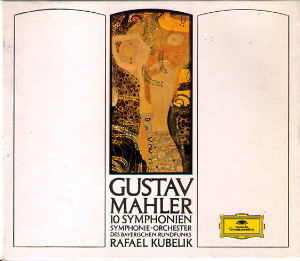 |
|
1 LP -
139 339 - (p) 1968
|
 |
| 10 CD's
- 429 042-2 - (c) 1989 |
|
| GUSTAV
MAHLER (1860-1911) |
|
|
|
|
|
|
|
Symphonie Nr. 4
G-dur
|
|
51' 50" |
|
| - 1. Bedächtig.
Nicht eilen |
15' 47" |
|
|
| - 2. In gemächlicher
Bewegung. Ohne Hast |
9' 04" |
|
|
| - 3. Ruhevoll |
18' 47" |
|
|
| -
4. Sehr behaglich. (Sopransolo: Wir
geniessen die himmlischen Freuden) |
8' 01" |
|
|
|
|
|
|
| Elsie Morison, Sopran |
|
| Symphonie-Orchester
des Bayerischen Rundfunks |
|
| Rudolf Koeckert, Violin-Solo |
|
| Rafael KUBELIK |
|
|
|
|
|
Luogo
e data di registrazione |
|
Herkules-Saal,
München (Germania) - aprile 1968 |
|
|
Registrazione:
live / studio |
|
studio |
|
|
Executive
Producer |
|
Otto
Gerdes |
|
|
Recording
Producer
|
|
Hans
Weber |
|
|
Balance
Engineer
|
|
Heinz
Wildhagen |
|
|
Prima Edizione
LP |
|
Deutsche
Grammophon - 139 339 - (1 LP) -
durata 51' 50" - (p) 1968 -
Analogico |
|
|
Prima Edizione
CD |
|
Deutsche
Grammophon - 429 042-2 - (10
CD's - 5°) - (c) 1989 - ADD |
|
|
Note |
|
Illustration
auf der Plattentaschenvorderseite:
"Obsgarten mit Rosen", Gemälde
(Ausschnitt) von Gustav Klimt,
Privatbesitz |
|
|
|
|
Close though
the Third and Fourth
Symphonies are to one
another, both musically and
in content, a signifcant
evolution of the composer
lay between them. A year
after the completion of the
Third Symphony Mahler was
appointed to Vienna, as
musical director of the
Court Opera. He saw the
appointment as a most
impressive recognition of
his aims and achievements as
an interpretative musician,
and in addition he felt
confirmed in his calling as
a composer. His
consciousness of matured
artistic and creative powers
filled him with inner joy.
In this agreable state of
peace within himself he
wrote his Fourth Symphony.
By comparison with the Third
Symphony, the Fourth sounds
almost like chamber music.
The themes, too, take on
almost chamber music forms.
The principal theme itself
suggests the character of a
pre-romantic sonata subject;
it has no dynamic power or
phatos. Possibly the
uncommon charm of this
Symphony's opening lies in
the fact that the composer
leaves open the question
whether he is in earnest or
joking, whether his play
with musical figures
represents reality or
illusion.
Again the lyrical theme
which brings its cantabile
character so wilfully to the
fore is in a similar sense
enigmatic, as though it
really wanted not to give
expression, but to play
at expressing. The same is
true of all the secondary
and subsidiary subjects. All
move or bustle along with
the same trimness and poise
of manner which may be
either genuine or assumed.
From the viewpoint of
technical construction this
movement reveals the hand of
a master, a highly skilled
craftsman. Behind it we
sense his enjoyment in
assembling his elaborate toy
and setting it in motion,
its figures interweaving in
apparent confusion, yet in
fact so well controlled that
at the end they are once
again standing in good
order.
The second movement, the
Scherzo, takes its subject -
death strikes up a tune -
none too seriously.
Certainly this is a weird,
fantastic pieces, but its
portrayal of death in less
macabre than grotesque, less
sinister than parodistic.
Mahler instructed that the
strings of the solo violin
on which these tunes are
played should be tuned a
tone higher than usual. He
thus created a uniquely
shrill, pinched tone, which
sounds not only uncommon but
unreal.
With the slow mouvement
there begins the ascent to
higher regions. Not really
ascent, but elevation. We do
not climb, but are raised
up. However, in order to
prevent the listener from
becoming a little too
serious and solemn the
composer inserts some
unquestionably cheerful
variations, creates an
unexpectedly agreable
atmosphere; the theme is
presented in the garb of
folksong, then as a
decorous, light-footed
Allegretto, and finally, in
a broad crescendo, as a
whirling Allegro. After this
outburst of gaiety a single
stroke re-established the
mood of the opening.
At the end of the first and
second movements we could
ask the question whether the
composer was in earnest, or
whether he was merely
playing with the charming
ideas and figures he had
conjured up. In the fourth
movement, and probably in
the third as well, there is
no place for such questions.
Every note shows clearly
that Mahler was completely
sincere in his concept of
the innocence of childhood
expressed in this
music.
Heinrich
Kralik
|
|